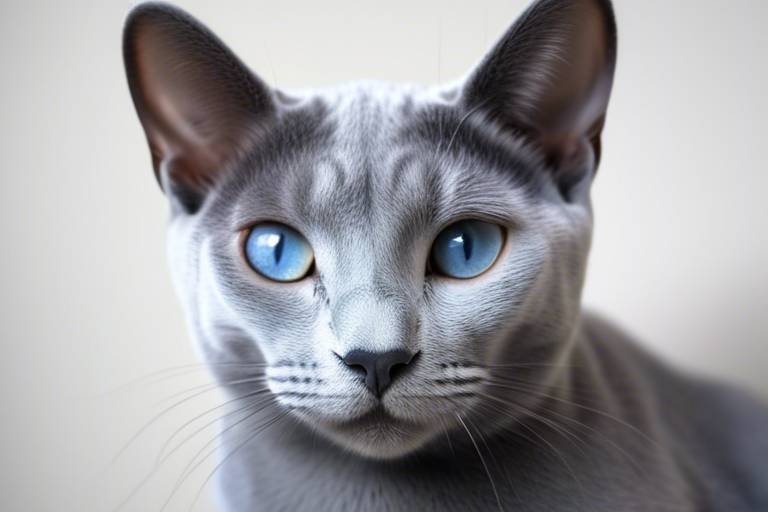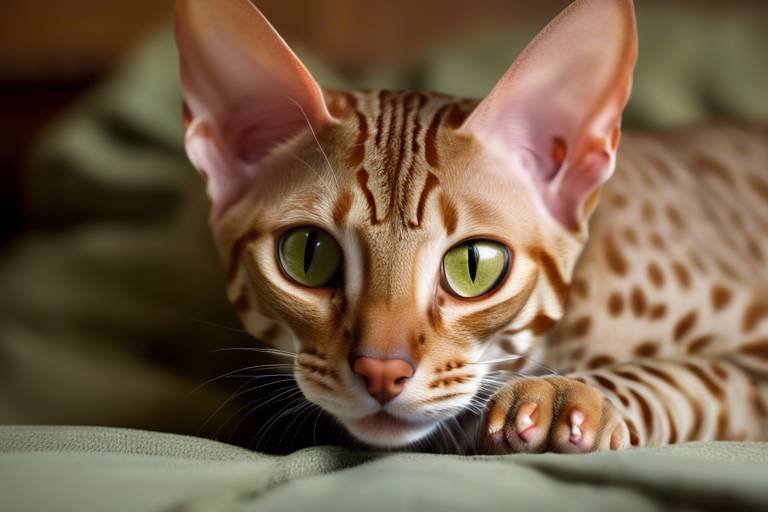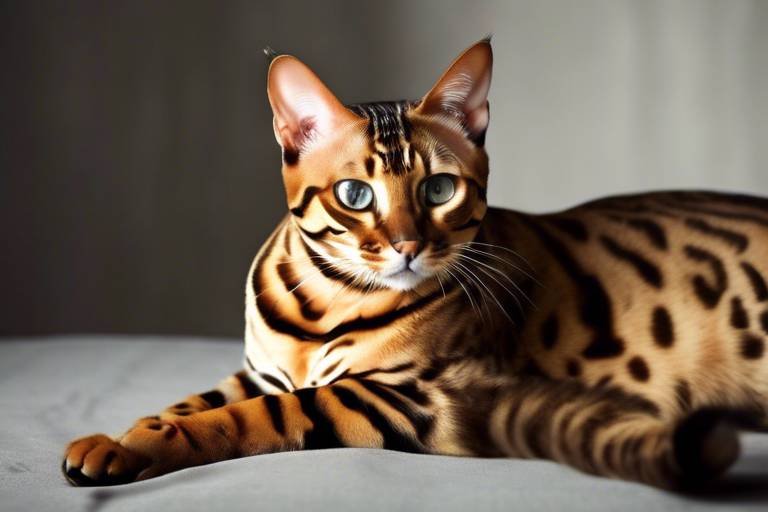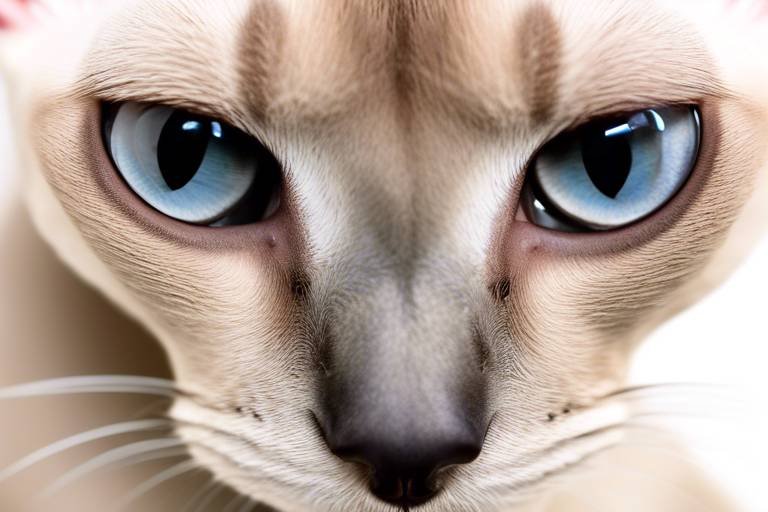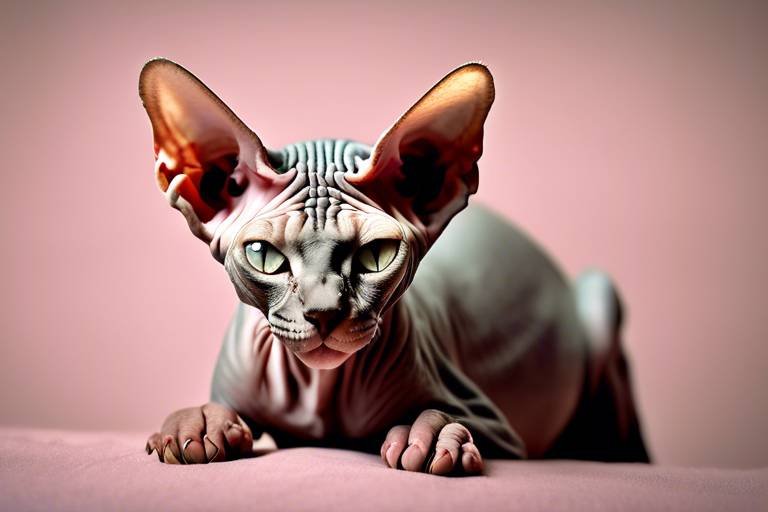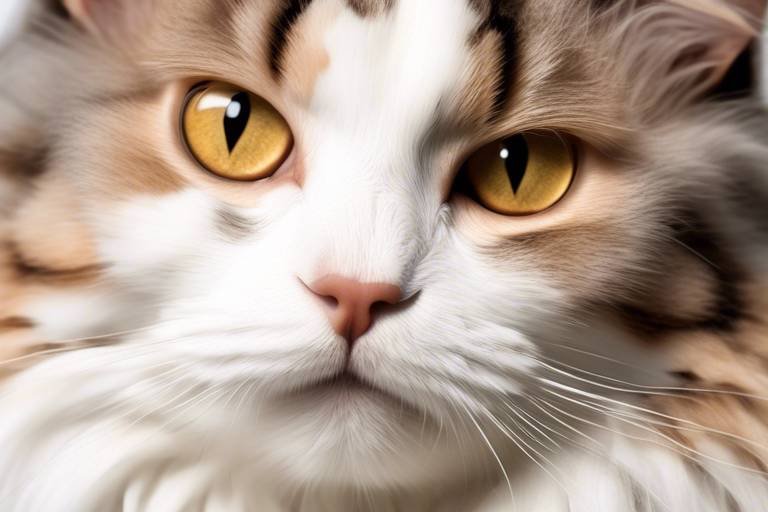Understanding the Gentle Nature of the Russian Blue
The Russian Blue cat is not just a beautiful creature; it embodies a gentle spirit that captivates the hearts of many. Known for their striking appearance and affectionate demeanor, these cats have a unique charm that sets them apart from other breeds. Imagine curling up on a cozy couch with a soft, blue-gray feline purring contentedly in your lap—this is the magic of the Russian Blue. Their gentle nature makes them not only great companions but also ideal pets for families and individuals alike.
What makes the Russian Blue so special? For starters, they are incredibly affectionate and enjoy being around their human companions. They thrive on love and attention, often following their owners around the house, eager to be involved in every aspect of life. This breed is known for its calm demeanor, making it a perfect choice for those who seek a tranquil presence in their homes. Unlike some other breeds that can be hyperactive or aloof, Russian Blues are typically more laid-back, combining playfulness with a serene attitude.
But it’s not just their temperament that draws people in; their physical characteristics are equally enthralling. With their striking blue-gray coat and vivid green eyes, Russian Blues are often described as looking like they stepped out of a fairy tale. Their elegant build and soft, plush fur make them a joy to pet and cuddle. It's almost as if they were designed to be the perfect lap cat. However, their beauty is matched by their intelligence. Russian Blues are known for their quick wits and problem-solving abilities, often engaging in play that challenges their minds.
In addition to their affectionate nature, Russian Blues are also known for their gentle playfulness. They enjoy interactive toys and games that stimulate their intellect and provide physical exercise. Whether it’s chasing a feather toy or solving a puzzle feeder, these cats love to engage in activities that keep their minds sharp and their bodies fit. This playful spirit, combined with their gentle demeanor, makes them a wonderful addition to any household.
In conclusion, the Russian Blue is more than just a pretty face. Their gentle nature, affectionate behavior, and playful intelligence make them a perfect companion for anyone looking to add a furry friend to their life. Whether you’re a family with kids or a single individual seeking companionship, the Russian Blue is sure to bring joy and warmth into your home.
- Are Russian Blues good with children? Yes, they are generally very gentle and affectionate, making them great companions for children.
- Do Russian Blues require a lot of grooming? Their short coat requires minimal grooming, but regular brushing helps reduce shedding.
- Are Russian Blues prone to any health issues? Like all breeds, they can have some genetic predispositions, but regular veterinary check-ups can help maintain their health.
- How much exercise do Russian Blues need? They enjoy playtime and interactive toys, so regular play sessions are recommended for their physical and mental well-being.
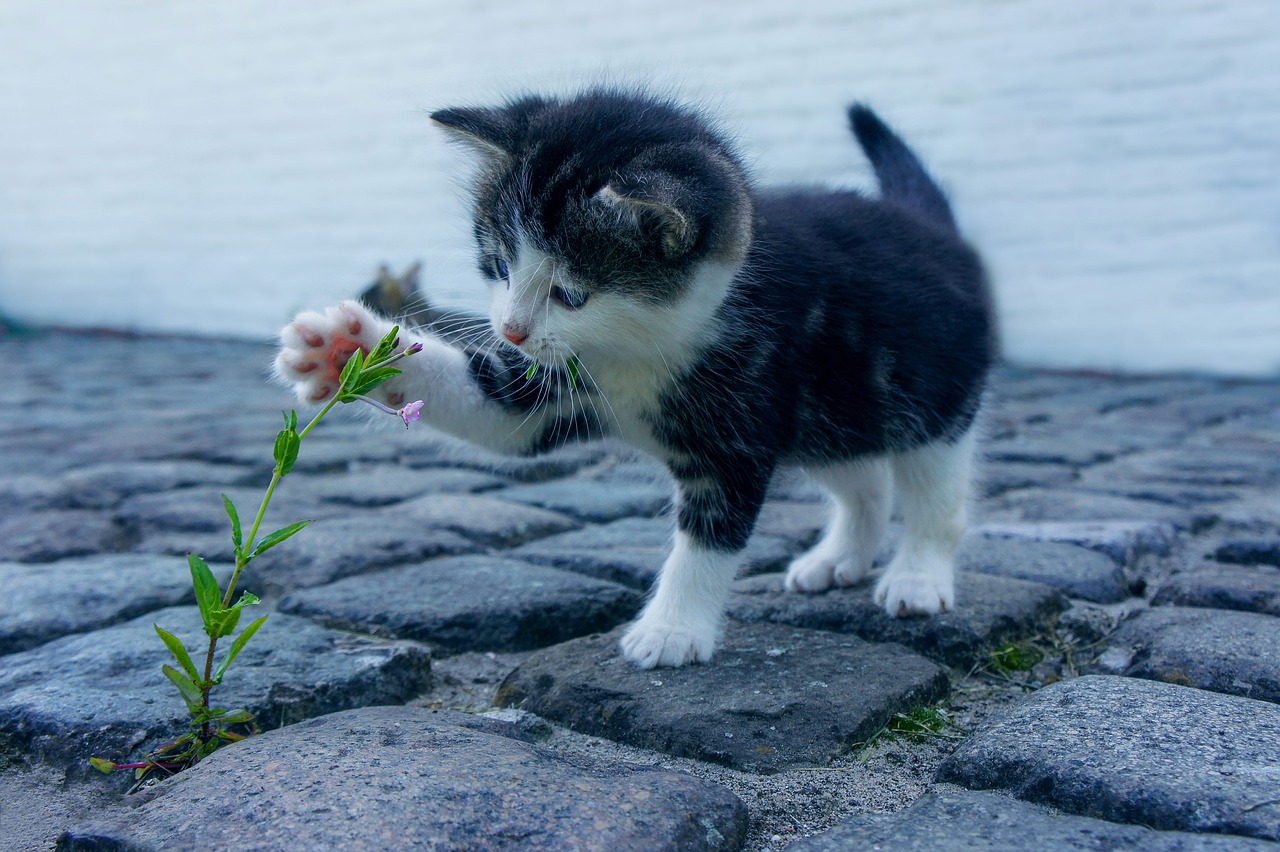
Origins of the Russian Blue
The Russian Blue cat is not just a pretty face; it carries with it a rich tapestry of history and legend that adds to its unique charm. This breed is believed to have originated in Russia, and while the exact timeline is shrouded in mystery, many enthusiasts speculate that it dates back to the 19th century. Some tales suggest that these cats were favored by Russian nobility, often seen lounging in the luxurious homes of the elite. Imagine a regal cat, with its striking blue-gray coat, basking in the sun on a velvet cushion—this image perfectly captures the essence of the Russian Blue.
One of the most popular legends surrounding the Russian Blue is that they were the beloved companions of the Russian czars. It's said that these cats were brought to Europe by sailors from the Archangel Isles, where they were prized for their stunning appearance and gentle demeanor. As the breed traveled across continents, it captured the hearts of many, becoming a symbol of elegance and grace.
During the early 20th century, the Russian Blue made its debut at cat shows, where its unique characteristics began to gain recognition. Breeders worked diligently to establish the breed standards we know today, focusing on enhancing their beautiful coats and captivating green eyes. The breed faced challenges, especially during World War II, when their numbers dwindled. However, dedicated breeders ensured that the Russian Blue would not fade into obscurity, and today, they are cherished pets around the world.
In terms of genetics, the Russian Blue is known for its unique coat color, which is a result of a specific gene that produces a double-layered, dense coat. This not only gives them their signature look but also provides warmth and protection against harsh climates. Their vibrant green eyes are another hallmark, often described as "emerald" or "jewel-like," adding to their allure.
So, what makes the Russian Blue so special? It's not just their looks; it's their history, their connection to royalty, and the legends that have woven them into the fabric of feline culture. These cats embody a sense of mystery and elegance, making them a favorite among cat lovers. Whether you are drawn to their stunning appearance or their gentle nature, the Russian Blue is undoubtedly a breed that leaves a lasting impression.
- What is the history behind the Russian Blue breed? The Russian Blue is believed to have originated in Russia, with connections to Russian nobility and tales of being brought to Europe by sailors.
- Why is the Russian Blue coat so unique? The breed's double-layered coat is a result of a specific gene, resulting in their stunning blue-gray color.
- Are Russian Blues good pets? Yes! They are known for their gentle and affectionate nature, making them excellent companions.
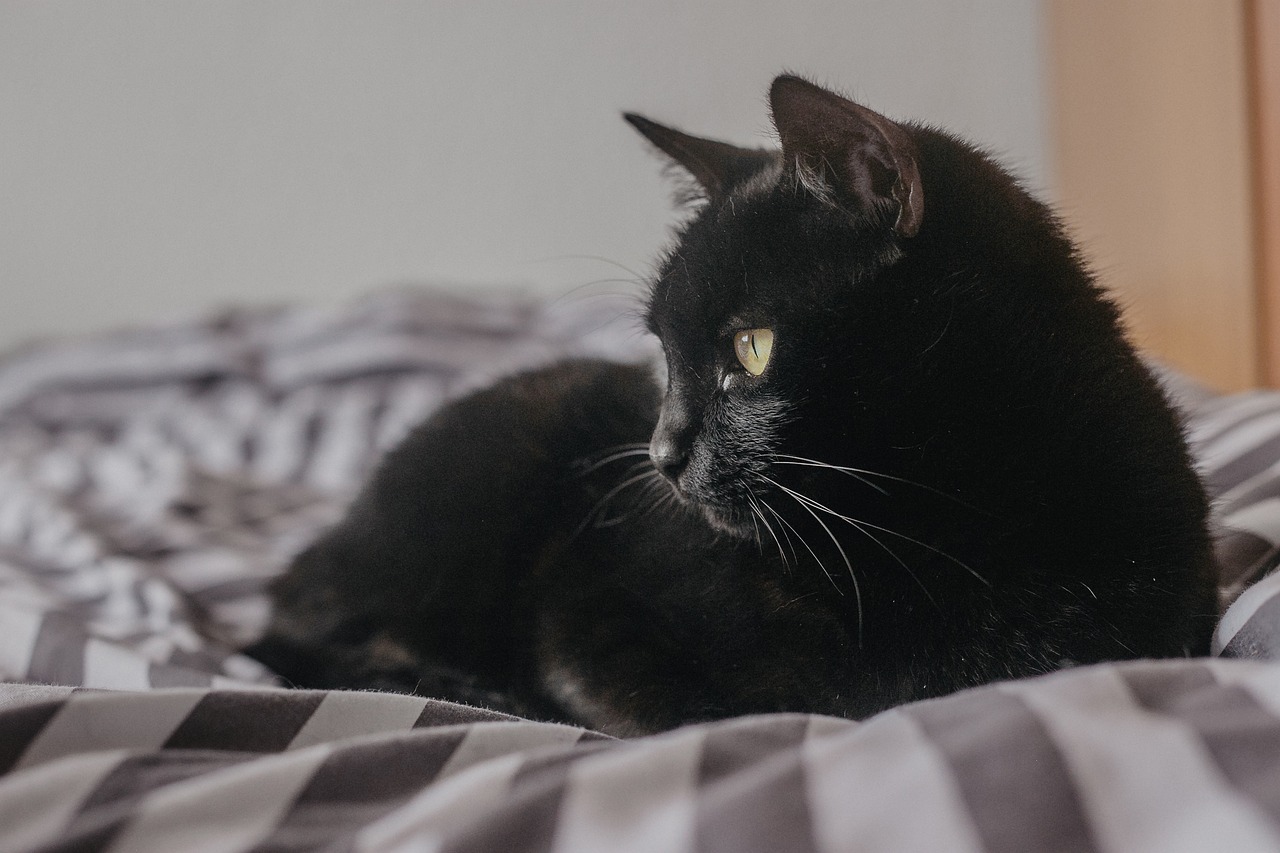
Physical Characteristics
The Russian Blue is not just a cat; it's a living piece of art. With its stunning blue-gray coat that glimmers like a moonlit night, this breed captures the hearts of many. The unique shade of their fur is a result of a double coat, which means they have a soft, dense undercoat that provides insulation and a sleek outer layer that gives them their signature look. Imagine running your fingers through a cloud—that's what petting a Russian Blue feels like! This luxurious coat not only adds to their beauty but also requires a bit of care to keep it looking its best.
But it’s not just their coat that turns heads; their vivid green eyes are truly mesmerizing. These eyes are like sparkling emeralds, set against the backdrop of their silvery fur. The contrast is striking, making their gaze both captivating and mysterious. It's as if they hold secrets of the universe within those beautiful orbs. The shape of their eyes is also unique, being slightly almond-shaped, which adds to their elegant appearance.
In terms of build, the Russian Blue is medium-sized, boasting a well-proportioned body that exudes grace and strength. Their muscular frame is complemented by long, slender legs and a fine-boned structure. This breed is not overly bulky, but rather athletic, which allows them to be agile and playful. They have a broad head with a straight profile, and their ears are large and pointed, giving them an alert and inquisitive expression. When you see a Russian Blue in motion, it’s like watching a dancer glide across the floor—every movement is fluid and graceful.
Another fascinating aspect of their physical characteristics is their paws. Russian Blues have small, rounded paws that seem almost delicate, yet they are strong enough to support their playful antics. Their tails are long and tapering, adding to their overall elegance. When a Russian Blue curls up next to you, you can’t help but admire how their physical traits come together to create such a stunning feline.
To summarize their physical characteristics, here’s a quick overview:
| Characteristic | Description |
|---|---|
| Coat Color | Blue-gray with a soft, dense undercoat |
| Eye Color | Vivid green, almond-shaped |
| Body Size | Medium, muscular, and well-proportioned |
| Ears | Large and pointed |
| Paws | Small and rounded |
| Tail | Long and tapering |
In conclusion, the physical characteristics of the Russian Blue not only make them visually striking but also contribute to their overall charm. Their unique blend of elegance, strength, and beauty is what sets them apart in the feline world. Whether they are lounging in a sunbeam or darting across the room in play, the Russian Blue is a breed that never fails to impress.
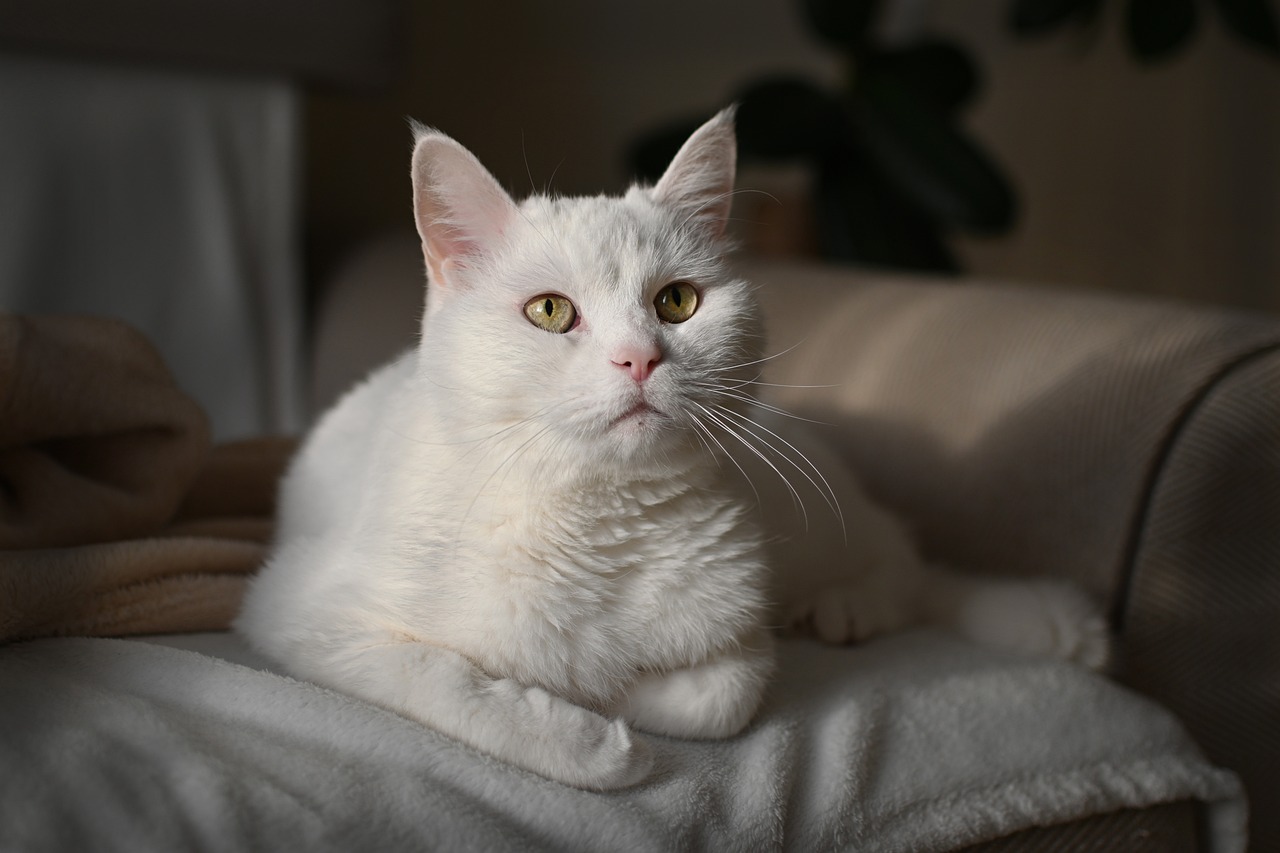
Temperament and Behavior
The Russian Blue cat is not just a pretty face; it possesses a gentle and affectionate temperament that makes it a standout among feline companions. Imagine curling up with a soft, purring bundle of fur that radiates warmth and love—this is the essence of the Russian Blue. Known for their friendly disposition, these cats are often described as playful yet gentle, making them ideal pets for families and individuals alike. They thrive on human interaction and are known to form strong bonds with their owners, often following them around the house like a shadow.
One of the most delightful traits of the Russian Blue is its intelligence. These cats are quick learners, which means they can be easily trained to follow commands or even perform tricks. Their curious nature often leads them to explore their surroundings, making them engaging companions. Whether it’s chasing after a feather toy or solving a puzzle feeder, they love to keep their minds stimulated. This intelligence, combined with their affectionate nature, means that they are not just passive pets; they actively seek out interaction and engagement.
Interestingly, Russian Blues are known for their calm demeanor. They tend to be less vocal than other breeds, which makes them perfect for quieter homes or apartments. Their gentle purring is often the only sound you’ll hear, creating a serene atmosphere. However, don’t mistake their quietness for shyness; they are quite social and enjoy the company of their human family. They often exhibit a playful side, especially during playtime, where they can show off their agility and hunting instincts.
When it comes to socialization, Russian Blues do well with other pets, especially if they are introduced at a young age. They are known to be tolerant and patient, which is a great trait if you have children or other animals in the house. They can adapt to various living situations, whether it’s a bustling family home or a quieter single-person apartment. However, like all cats, they do appreciate their personal space and may need some alone time to recharge. It’s essential to respect their boundaries, as this will help them feel secure and loved.
To summarize, the temperament and behavior of the Russian Blue cat can be characterized by the following traits:
- Affectionate: They enjoy cuddling and being near their owners.
- Intelligent: Quick learners who thrive on mental stimulation.
- Calm: Less vocal and generally peaceful in demeanor.
- Playful: Active during playtime and enjoy engaging with toys.
- Social: Friendly with both humans and other pets.
In conclusion, the Russian Blue cat is a remarkable breed that brings a perfect blend of affection, intelligence, and calmness to any household. Their gentle nature not only makes them excellent companions but also enriches the lives of those lucky enough to share their home with them.
Q: Are Russian Blues good with children?
A: Yes, Russian Blues are known for their gentle and patient nature, making them great companions for children.
Q: How much exercise do Russian Blues need?
A: While they are playful, Russian Blues don’t require extensive exercise. Regular play sessions with toys will keep them happy and healthy.
Q: Do Russian Blues have any specific health issues?
A: Generally, they are healthy cats, but like all breeds, they can be prone to certain genetic conditions. Regular vet check-ups are essential.
Q: How can I keep my Russian Blue mentally stimulated?
A: Interactive toys, puzzle feeders, and regular playtime with their owners are great ways to keep them engaged and mentally sharp.
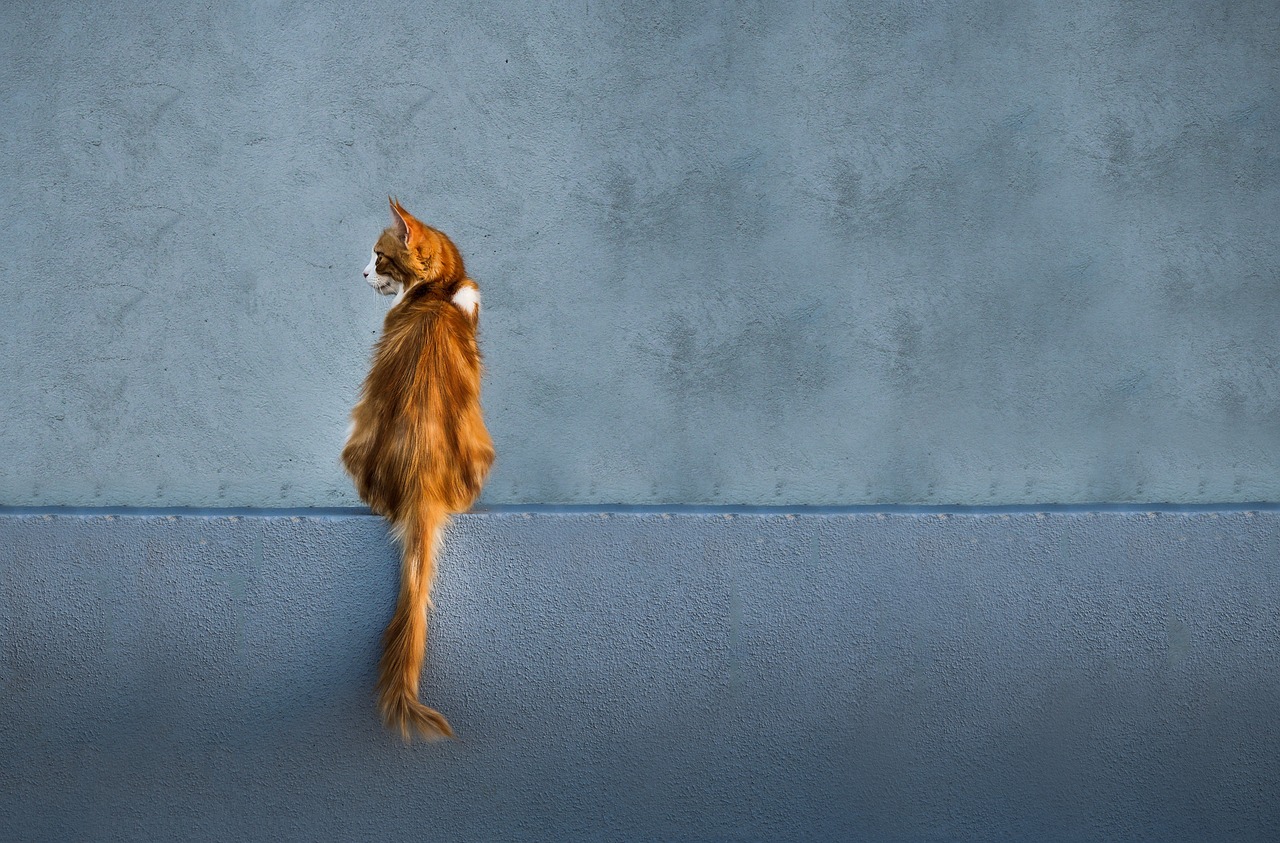
Care and Maintenance
Caring for a Russian Blue cat is not just about meeting their basic needs; it's about nurturing their unique personality and ensuring they thrive in your home. These elegant felines require a balanced diet, regular grooming, and routine veterinary care to maintain their health and happiness. Just like a well-tended garden, a little attention can go a long way in cultivating a strong bond with your Russian Blue.
First and foremost, nutrition plays a pivotal role in the well-being of your Russian Blue. Providing them with high-quality cat food, rich in proteins and essential nutrients, is crucial. You might think of it as fueling a sports car; the better the fuel, the better the performance. Look for brands that list real meat as the first ingredient and avoid fillers like corn and soy. Additionally, consider their age, activity level, and any specific health concerns when selecting the right diet. For instance, kittens, adults, and seniors all have different dietary needs.
Another important aspect of care is grooming. The Russian Blue's stunning blue-gray coat is not only beautiful but also requires regular maintenance to keep it looking its best. While they are known to have a relatively low-shedding coat, brushing them at least once a week helps remove loose fur and prevents matting. Think of this grooming session as a mini spa day for your feline friend, allowing you both to bond while ensuring their coat remains healthy and shiny.
Regular veterinary check-ups are essential for monitoring your cat's health. These visits can help catch any potential issues early on, which is especially important for breeds like the Russian Blue that may be prone to certain genetic conditions. Vaccinations, dental care, and parasite prevention should be part of your routine. Just like we go for annual health check-ups, our furry companions deserve the same attention to their health.
Another aspect of care is creating a stimulating environment. Russian Blues are intelligent and playful, so providing them with toys, scratching posts, and interactive playtime is vital. Think of their playtime as exercise; it keeps them fit and mentally sharp. Rotate their toys regularly to keep things fresh and exciting. You might even consider puzzle toys that challenge their minds and reward them with treats, making playtime both fun and rewarding.
Finally, don't forget about the importance of love and attention. Russian Blues are known for their affectionate nature and thrive on social interaction. Make it a habit to spend quality time with your cat, whether it's cuddling on the couch or engaging in a playful chase around the house. This emotional connection is the heart of their care and maintenance, ensuring they feel secure and loved in their forever home.
- How often should I groom my Russian Blue? It's recommended to groom them at least once a week to keep their coat healthy and reduce shedding.
- What type of food is best for a Russian Blue? High-quality cat food with real meat as the first ingredient is ideal, tailored to their age and activity level.
- Do Russian Blues require special veterinary care? Regular check-ups are important to monitor their health, as they may be prone to certain genetic conditions.
- How can I keep my Russian Blue mentally stimulated? Provide a variety of toys, interactive playtime, and puzzle toys to keep their minds sharp and engaged.
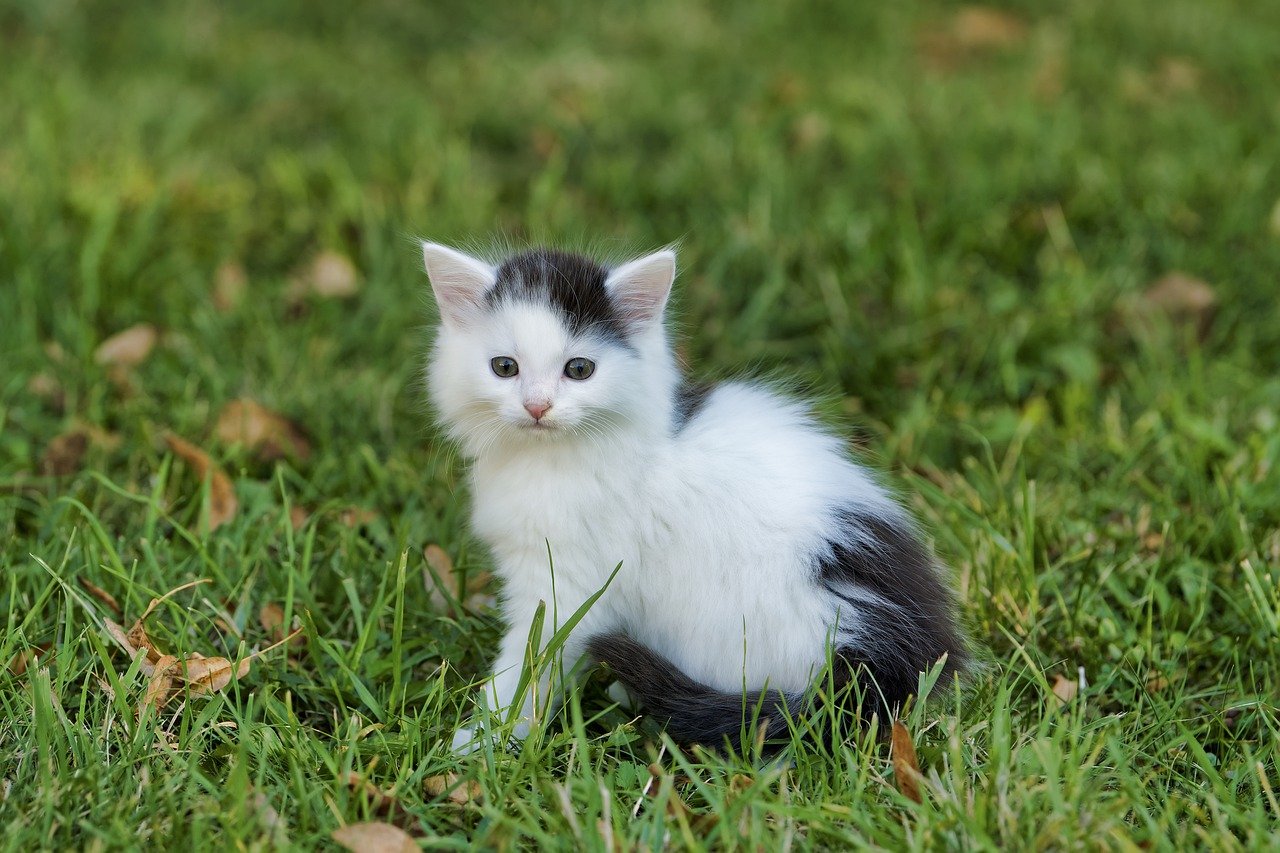
Socialization Needs
The Russian Blue cat is not just a pretty face; it possesses a gentle and affectionate nature that thrives on social interaction. Socialization is crucial for these cats, as it helps them develop into well-rounded companions. Unlike some breeds that may be more independent or aloof, Russian Blues tend to form strong bonds with their humans. They are known to be playful and curious, often seeking out companionship and engagement. This breed, with its charming personality, can easily adapt to various living situations, making them suitable for both families and individuals.
To foster their gentle disposition, it's essential to provide a stimulating environment that encourages interaction. This includes engaging them in playtime and allowing them to explore their surroundings. Russian Blues are intelligent cats, and they thrive when given opportunities to solve puzzles or engage in activities that challenge their minds. Regular play sessions not only keep them physically active but also strengthen the bond between the cat and its owner.
Moreover, socialization with other pets is equally important. Introducing your Russian Blue to other animals in a controlled manner can help prevent territorial behaviors and ensure a harmonious household. It's advisable to supervise initial interactions and gradually increase their time together. This way, your Russian Blue can learn to coexist peacefully with other pets, whether they are cats or dogs.
When it comes to socializing with humans, Russian Blues are generally friendly, but they may be shy at first. It’s important to allow them to approach new people at their own pace. Encourage visitors to sit calmly and let the cat come to them, rather than forcing interaction. This gentle approach helps the Russian Blue feel safe and secure, reducing anxiety and promoting a positive experience.
In summary, the socialization needs of a Russian Blue cat are vital for its overall well-being. By providing a loving environment, encouraging play, and facilitating interactions with both humans and other pets, you can help your Russian Blue flourish. Remember, a well-socialized cat is not only happier but also a more delightful companion.
- How can I help my Russian Blue socialize with other pets?
Start by introducing them in a controlled environment, ensuring both pets have space to feel comfortable. Gradually increase their time together while monitoring their interactions. - What kinds of toys are best for socializing my Russian Blue?
Interactive toys, puzzle feeders, and feather wands are excellent choices. These encourage play and mental stimulation, which can enhance their social skills. - Are Russian Blues good with children?
Yes, Russian Blues are known for their gentle nature and can be great companions for children, provided they are introduced properly and treated with respect.
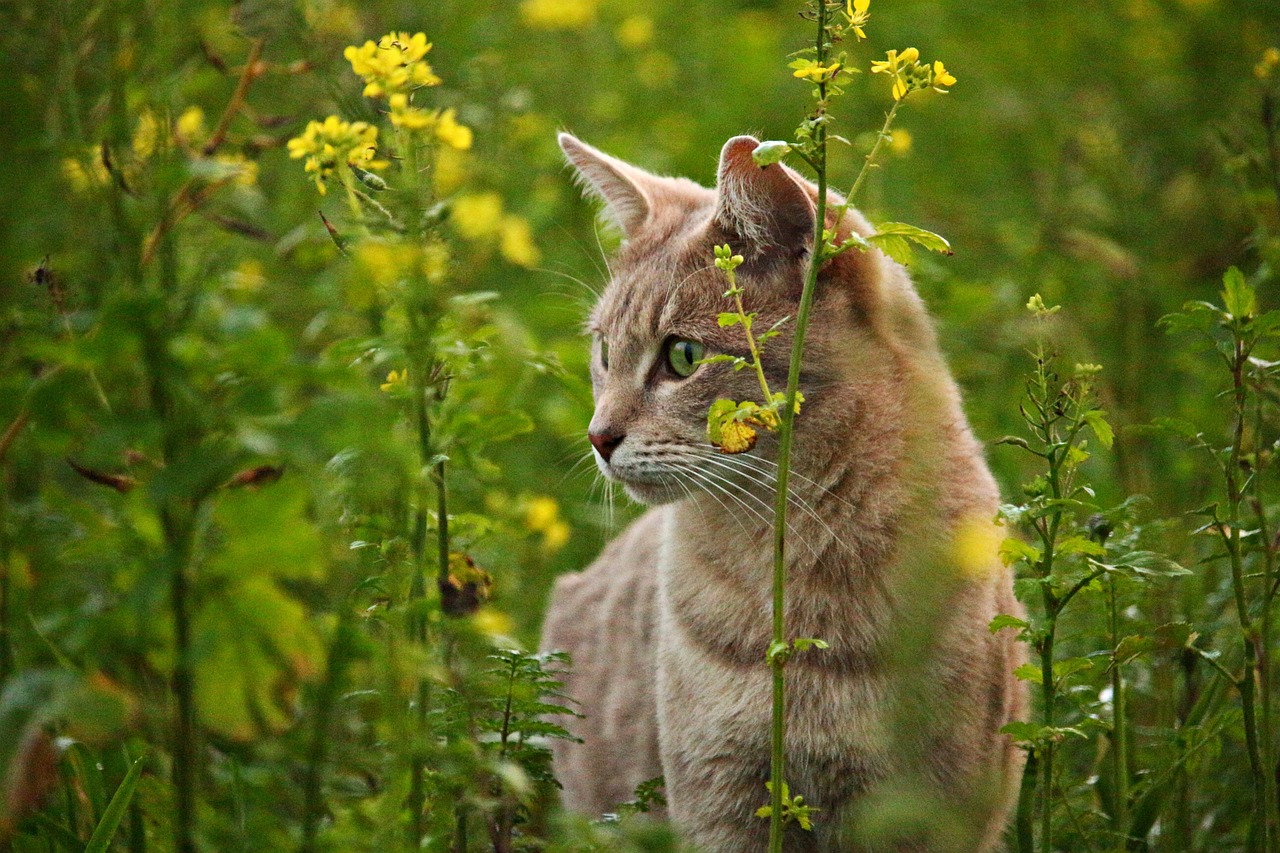
Training Techniques
Training a Russian Blue cat can be a delightful experience, especially considering their intelligence and eagerness to please. These cats are not just pretty faces; they possess a sharp mind that thrives on mental stimulation. So, how do we tap into that potential? The answer lies in using positive reinforcement techniques that reward good behavior rather than punishing undesirable actions. This method not only builds trust between you and your feline friend but also creates a fun and engaging learning environment.
Imagine teaching your Russian Blue to sit or come when called. Instead of scolding them for not listening, try using treats or their favorite toy as a reward. For instance, when your cat responds correctly, shower them with praise and a tasty snack. This approach fosters a sense of accomplishment and encourages them to repeat the behavior. It's like giving them a pat on the back, but with a delicious twist!
Consistency is key in training. Establish a routine that your cat can anticipate. For example, if you decide to train them in the morning, stick to that schedule. This helps your Russian Blue understand when to focus on learning and when it's time to relax. Additionally, keep training sessions short—about 5 to 10 minutes. Cats, much like children, have limited attention spans, and you want to keep them engaged without overwhelming them.
Another effective technique is to incorporate play into training. Russian Blues are naturally playful, and using their favorite toys can make learning feel more like a game than a chore. For example, if you want to teach your cat to jump through a hoop, start by enticing them with a toy. Gradually, as they become more comfortable, you can introduce the hoop. This method not only makes training enjoyable but also strengthens the bond between you and your pet.
Socialization is also a crucial aspect of training. Expose your Russian Blue to various environments, people, and even other pets. This exposure helps them develop into well-rounded companions. Just like a child who learns to interact with others, your cat will benefit from these experiences. Make sure to monitor their reactions and provide positive reinforcement when they handle new situations well.
To summarize, here are some key training techniques for your Russian Blue:
- Use Positive Reinforcement: Reward good behavior with treats and praise.
- Be Consistent: Stick to a training schedule to help your cat anticipate learning times.
- Keep Sessions Short: Limit training to 5-10 minutes to maintain engagement.
- Incorporate Play: Use toys to make training fun and interactive.
- Encourage Socialization: Expose your cat to different environments and people.
By following these techniques, you'll not only train your Russian Blue effectively but also enhance your relationship with your furry companion. Remember, patience and positivity go a long way in nurturing their gentle nature while ensuring they grow into well-behaved and happy cats.
Q: How long does it take to train a Russian Blue?
A: The training duration varies based on the cat's age and personality, but with consistent practice, you can see results within a few weeks.
Q: Can I train my Russian Blue to walk on a leash?
A: Yes, many Russian Blues can learn to walk on a leash with patience and gradual exposure. Start indoors and gradually move outside.
Q: What if my cat is not responding to training?
A: Ensure that you're using positive reinforcement and that the training sessions are not too long. Every cat learns at their own pace!
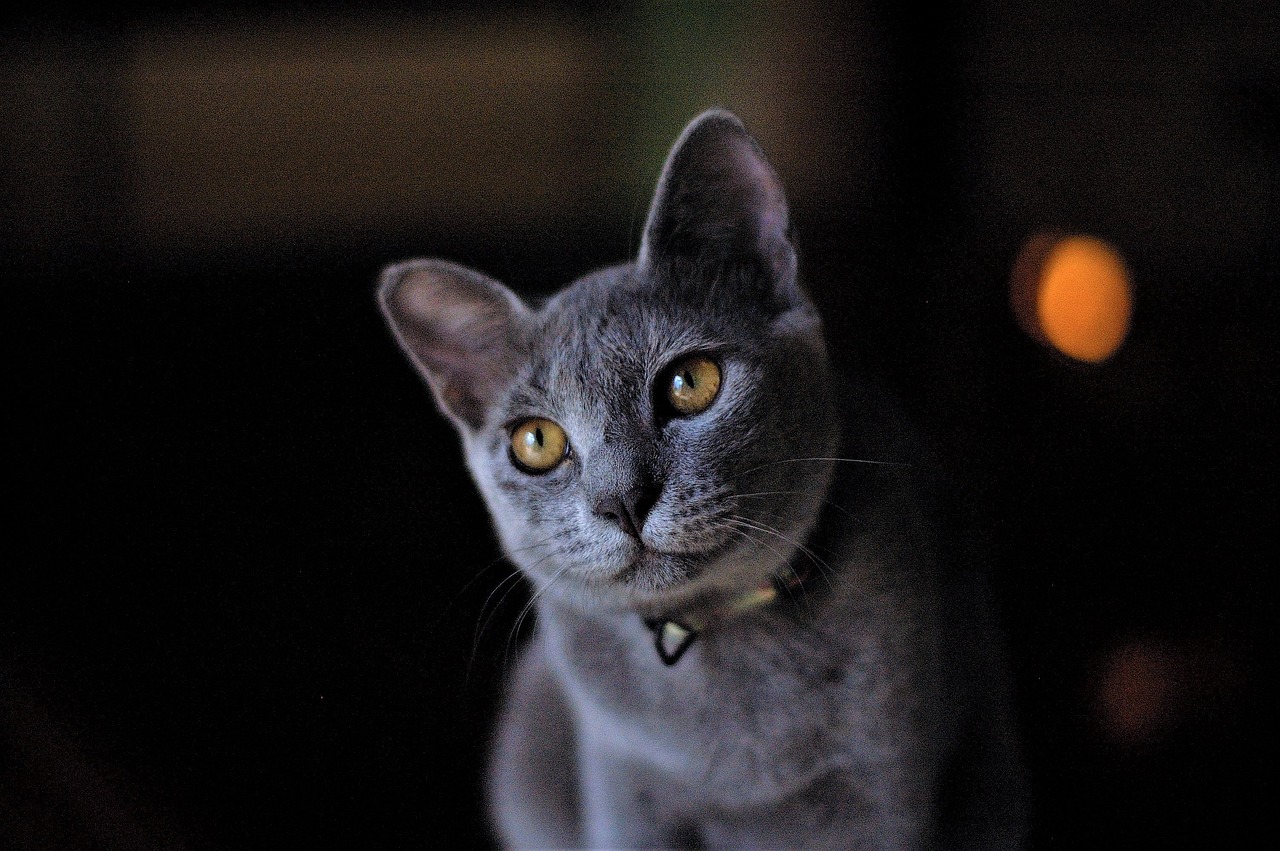
Common Health Issues
The Russian Blue is not just a pretty face; they come with a unique set of health considerations that every potential owner should be aware of. While these cats are generally healthy and robust, they are not immune to certain genetic predispositions that can affect their well-being. Understanding these common health issues can help you provide the best care for your feline friend and ensure a long, happy life together.
One of the most notable health concerns in Russian Blues is hypertrophic cardiomyopathy (HCM). This is a condition that affects the heart muscle, causing it to thicken and potentially leading to heart failure. While HCM can affect any breed, Russian Blues are particularly susceptible. Regular veterinary check-ups, including echocardiograms, can help detect this condition early, allowing for timely interventions.
Another issue to be mindful of is oral health. Russian Blues can be prone to dental problems, including periodontal disease. It's essential to maintain their oral hygiene through regular brushing and dental check-ups. A proper diet can also play a significant role in preventing dental issues. Offering dry kibble can help reduce plaque buildup, while dental treats designed specifically for cats can add an extra layer of protection.
Furthermore, like many other breeds, Russian Blues may suffer from obesity if not monitored closely. These cats are known for their playful nature, but they can become less active as they age. To combat this, it's crucial to provide them with a balanced diet and engage them in regular playtime. Keeping an eye on their weight can prevent a host of related health issues, such as diabetes and joint problems.
In addition to these concerns, Russian Blues can also experience allergies, whether environmental or food-related. Symptoms may include sneezing, itching, or gastrointestinal upset. If you notice these signs, it's best to consult with your veterinarian to determine the cause and appropriate treatment. A hypoallergenic diet or medication may be necessary to alleviate discomfort.
Lastly, while not a specific health issue, it’s worth noting that Russian Blues are known to be sensitive to stress. Changes in their environment or routine can lead to behavioral issues or even physical health problems. Creating a stable, loving environment is key to keeping your Russian Blue healthy and happy.
In summary, while Russian Blues are generally healthy cats, they are predisposed to certain health issues such as hypertrophic cardiomyopathy, dental problems, obesity, allergies, and stress sensitivity. Regular veterinary visits and proactive care can help mitigate these risks, ensuring your feline companion remains vibrant and full of life.
- What is the average lifespan of a Russian Blue?
The average lifespan of a Russian Blue is typically between 15 to 20 years, with proper care and regular veterinary check-ups. - Are Russian Blues prone to any specific diseases?
Yes, they can be prone to hypertrophic cardiomyopathy (HCM) and dental issues, so regular veterinary care is essential. - How can I maintain my Russian Blue’s dental health?
Regular brushing, dental treats, and professional cleanings can help maintain their dental health. - What should I feed my Russian Blue to prevent obesity?
A balanced diet with controlled portions and regular playtime is crucial in preventing obesity.
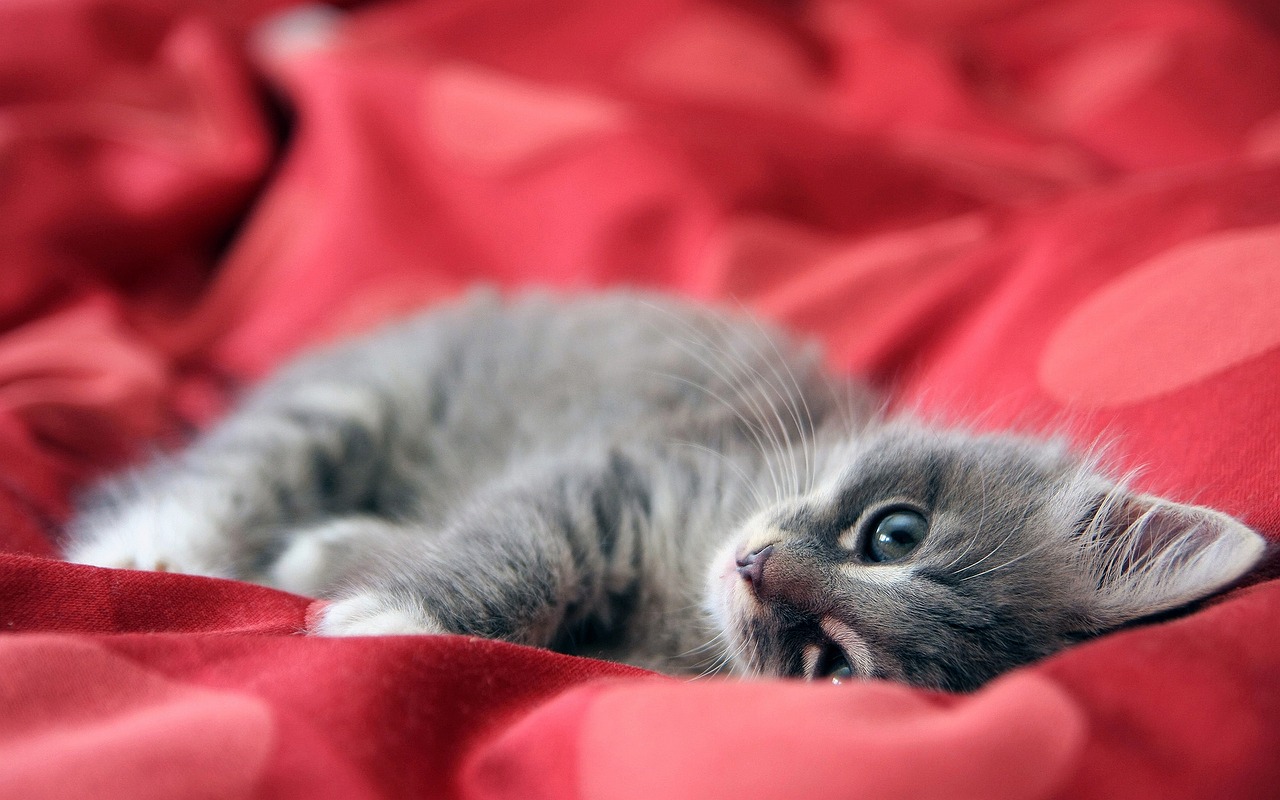
Choosing a Russian Blue
Deciding to welcome a Russian Blue into your home is an exciting venture, but it’s crucial to approach this decision with careful consideration. These enchanting cats are not only known for their stunning appearance but also for their gentle nature and affectionate temperament. So, how do you go about choosing the perfect Russian Blue for your lifestyle? Here are some key points to keep in mind.
First and foremost, it's essential to find a reputable breeder. You want to ensure that the breeder prioritizes the health and well-being of their cats. Look for breeders who are registered with recognized cat associations, such as the Cat Fanciers' Association (CFA) or the International Cat Association (TICA). A good breeder will be happy to answer your questions and provide health clearances for the kittens' parents. Transparency is a sign of a responsible breeder.
When you visit a breeder, take note of the environment where the kittens are raised. It should be clean, safe, and filled with love. Kittens raised in a nurturing environment are more likely to develop into well-adjusted adults. Pay attention to the kittens’ behavior as well; they should be playful, curious, and socialized to humans and other pets.
Next, consider the breed standards. Understanding what to expect in terms of appearance and personality traits will help you make an informed choice. Russian Blues typically have a striking blue-gray coat, vivid green eyes, and a graceful build. They are known for their intelligence and gentle demeanor, which makes them fantastic companions. If you’re drawn to a kitten that seems particularly shy or aggressive, it may not be the right fit for your home.
Another important aspect to consider is your lifestyle. Russian Blues thrive in environments where they receive plenty of attention and interaction. If you work long hours or travel frequently, you might want to think about adopting two kittens so they can keep each other company. This breed is known for forming strong bonds with their humans, so the more time you can dedicate to them, the better.
Finally, think about adopting from a shelter or rescue organization. While finding a purebred Russian Blue may be more challenging, many wonderful cats are looking for loving homes. Plus, adopting a cat in need can be one of the most rewarding experiences. You might just find a Russian Blue mix that steals your heart!
In summary, choosing a Russian Blue involves:
- Researching reputable breeders or shelters.
- Understanding breed standards and personality traits.
- Considering your own lifestyle and how much time you can dedicate to your new feline friend.
- Being open to adopting from a rescue organization.
By taking these factors into account, you can ensure that you select a Russian Blue that fits seamlessly into your life, bringing joy and companionship for many years to come.
Q: What should I look for in a reputable breeder?
A: Look for breeders who are registered with recognized associations, provide health clearances, and maintain a clean and loving environment for their cats.
Q: Can I adopt a Russian Blue from a shelter?
A: Yes! While it may be more challenging to find a purebred Russian Blue at a shelter, many cats are in need of homes, and you might find a Russian Blue mix that fits your family perfectly.
Q: How much time do I need to dedicate to a Russian Blue?
A: Russian Blues thrive on interaction and companionship, so it's best to spend quality time with them daily. If you work long hours, consider adopting two cats for companionship.
Frequently Asked Questions
- What is the temperament of a Russian Blue cat?
The Russian Blue cat is known for its gentle and affectionate nature. These cats are typically friendly, intelligent, and playful, making them wonderful companions for families and individuals alike. They often form strong bonds with their owners and can be quite social, enjoying interaction with both humans and other pets.
- How should I care for my Russian Blue?
Caring for a Russian Blue involves a few essential steps to ensure they remain healthy and happy. Regular grooming is important due to their dense, plush coat, which can benefit from weekly brushing. Additionally, providing a balanced diet tailored to their age and activity level is crucial for maintaining their health. Don't forget to schedule regular vet check-ups to monitor their overall well-being!
- Are Russian Blues prone to any health issues?
Like all breeds, Russian Blues can have specific health concerns. Some common issues include genetic predispositions to certain conditions such as hypertrophic cardiomyopathy (HCM). It's essential to choose a reputable breeder who screens for these issues and to keep an eye on your cat's health as they age. Regular veterinary visits can help catch any potential problems early.
- What is the best way to train a Russian Blue?
Training a Russian Blue can be an enjoyable experience due to their intelligence and eagerness to please. Using positive reinforcement techniques, such as treats and praise, can help motivate them. Start with basic commands and gradually introduce more complex tricks. Remember, patience is key, and keeping training sessions short and fun will yield the best results!
- How do I choose the right Russian Blue for my home?
Selecting a Russian Blue involves looking for a reputable breeder who adheres to breed standards. Pay attention to the cat's personality and energy level to ensure they fit well with your lifestyle. It's also helpful to meet the kitten's parents to gauge their temperament, as this can give you insight into how your future cat might behave.
- Do Russian Blues get along with other pets?
Yes, Russian Blues are generally sociable and can get along well with other pets, especially if they are properly socialized from a young age. They thrive on interaction, so introducing them to other animals in a controlled and gradual manner can help foster positive relationships. Just be sure to monitor their interactions to ensure everyone is comfortable!

